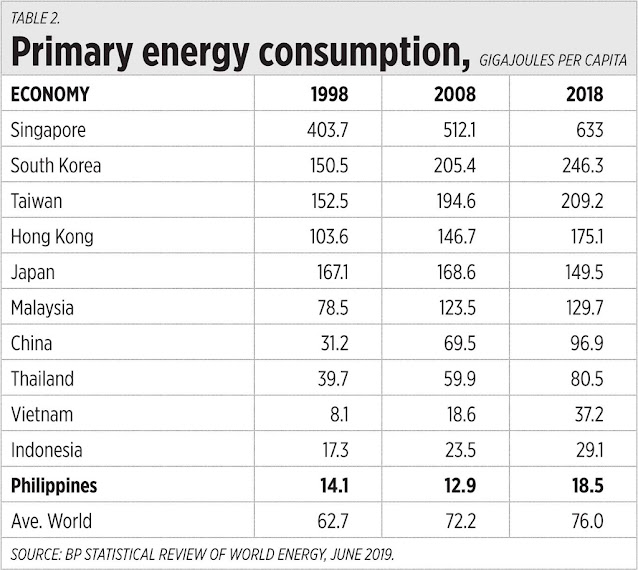* My column in BusinessWorld on September 17, 2019.
See also:
“A power ‘to
promote the progress of science and useful arts, by securing, for a limited
time, to authors and inventors, the exclusive right to their respective
writings and discoveries.’… The right to useful inventions seems with equal
reason to belong to the inventors. The public good fully coincides in both
cases with the claims of individuals.”
— James Madison,
The Federalist Papers, No. 43, 1788.
This argument by Madison would be among the basis for the
enactment of the USA’ first copyright law in 1790. The US patent law was also
enacted that year while its trademark law was made in 1881, revised and
expanded in 1905.
The Philippines’ law on these are contained in the
Intellectual Property Code of the Philippines (RA 8293, 1997). A report in
BusinessWorld, “Intellectual property applications climb 11% in first half”
said:
“‘Society is now appreciating the IP (intellectual
property) system more than ever,’ IPOPHL (Intellectual Property Office of the
Philippines) Director-General Josephine R. Santiago said. Trademark filings
rose by 11% year-on-year to 18,964 in the first half… Patent filings grew 4% to
1,991… Utility model filings grew 31% to 1,173… Industrial model filings rose
14% to 824… Copyright filings rose 53% to 990.”
These are good numbers. I checked the World Bank’s World
Development Indicators (WDI) database, data on trademark application. Then, I
also checked the World Economic Forum (WEF) Global Competitiveness Index (GCI)
2018 report — Pillar No. 12 is Innovation capability, and among the sub-pillars
are patent applications and trademark applications per million population.
So for the numbers in the table, trademark applications
are in absolute amounts, both country residents and non-residents, while the
index for patent and trademark applications refers to per capita applications.
China and India lead in absolute amount while Singapore and the Philippines are
the laggards as of 2017. But in patent applications ranking, Japan, Taiwan, and
South Korea were the world’s top three (See Table).
The good news for the Philippines then is that we are
fast catching up on the use of intellectual property rights (IPR). Trademark
applications have doubled from 2007 to 2017, and for copyright, IPO’s first
half data for 2019 show a huge increase of more than 50%.
Recall also that the fastest-growing sub-sector in the
Philippine economy over the past 5-1/2 years, 2014 to H1 2019, is intellectual
property products, under Capital Formation (or private investments). It was
growing at 28% per year, capital formation growing at 14%, and GDP at 6.3%.
Fast growth in IPR use also means fast growth in IPR
infringement. This was tackled in the last panel of the BusinessWorld Industry
Summit 4.0 last week, Sept. 9, at Shangri-La at The Fort at BGC. The last panel
was about “Content and piracy” with speakers from the Coalition Against Piracy,
the Optical Media Board, Globe Telecoms, and a film director.
So the role of the state in protecting private property,
both physical and intellectual property, is reasserted by the current
situation. And on this, two IPR-related events will be co-sponsored by our
think tank, Minimal Government Thinkers (MGT).
The first is the launching of a new report, “The
importance of IPR for progress: reform agenda for ASEAN countries,” in
partnership with Geneva Network (UK), on the afternoon of Sept. 24 at the
Holiday Inn Makati. Department of Trade and Industry (DTI) Secretary Ramon
Lopez will give the keynote speech and, since the DTI is the mother agency of
the Intellectual Property Office, he has a good overview of the sector in
relation to the overall trade and investment environment.
The second is the global launch of the International
Property Rights Index (IPRI) 2019 by the Property Rights Alliance (PRA,
Washington DC) on Oct. 16 at Fairmont Hotel Makati. MGT and the Foundation for
Economic Freedom (FEF) will be the local partners in launching this big event.
The author of the report, Dr. Sary Levy-Carciente, and PRA Executive Director
Lorenzo Montanari will come to Manila to present the report. Both events are by
invitation only, but we will consider some interested individuals working on
the sector who are not in our list. Send me an e-mail.
Private property is the cornerstone of economic freedom
and free enterprise. Both physical property and intellectual property.
Investors come if they are assured that their offices, investments, corporate
brands/trademarks, patented and copyrighted inventions are respected and
protected by the government against pirates and IPR thieves.
--------------
See also:







































